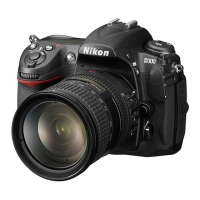Active Folder
(User’s Manual: D300S page 256; D300 page 258)
The D300(S) automatically creates a folder on its primary
memory card called 100D300S, while the D300 uses the
name 100ND300 on its single CF memory card. This folder
can contain up to 999 images.
If you want to store images in separate folders on the memory
card, you might want to create a new folder, such as
200D300S or 200ND300. Since the D300S and D300 folder
names differ by a couple of letters, I am going to use the
D300S folder name for the rest of this section; otherwise, I’ll
be repeating numbers over and over. Whenever you see
something like 100D300S just remember that the D300 name
is slightly different with 100ND300 instead.
Each folder you create can hold 999 images and, using Active
folder, you can select any folder as the default folder. This is
a way to isolate certain types of images on a photographic
outing. Maybe you’ll put landscapes in folder 300D300S and
people shots in 400D300S. Whenever the camera senses that
the current folder contains 999 images, a new folder is
created, with the value of the first three digits of the folder
name increased by one. If you are using a folder named
100D300S, the camera will automatically create a new folder
called 101D300S when you exceed 999 images in folder
100D300S.
When manually creating folder names, you may want to leave
room for the camera’s automatic folder creation and naming.
If you try to create a folder name that already exists, the
104

